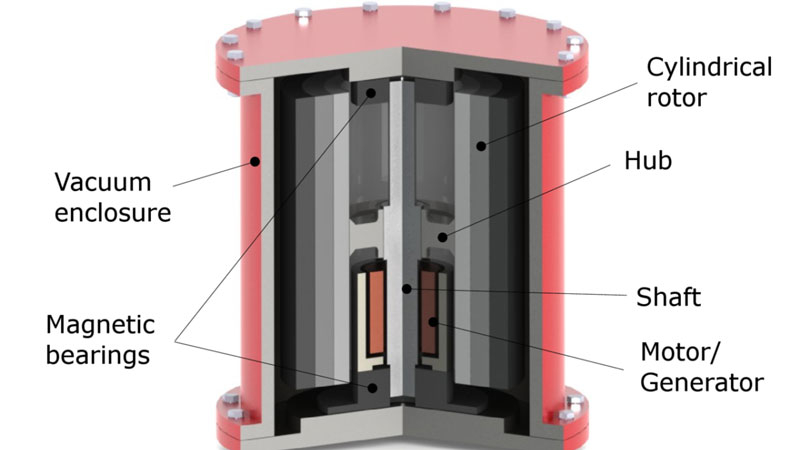China has become a testing ground for promising energy storage devices, among which the newly launched flywheel-based buffer power plant stands out. The system stores kinetic energy in rotating flywheels, converting it into electrical energy almost instantly, because the engine and generator in it are the same device.

General principle of a flywheel energy storage device. Image source: Pjrensburg, Wikimedia Commons
The flywheel energy storage project was developed by the Chinese company BC New Energy. The main investor was Shenzhen Energy Group. The production of the plants was carried out by Shanxi Electric Power Construction Company together with the Shanxi Institute of Energy, and China Energy Construction also took part in the construction of the power plant. The facility is named Dinglun Flywheel Energy Storage Power Station. 340 million yuan ($48 million) were spent on its creation. Scheduled commissioning was expected in December 2023, but was delayed until the end of summer 2024.
The total capacity of the installation in Changzhi City, Shanxi Province reaches 30 MW. It consists of 120 flywheel generators (storage units), which are divided into 10 blocks of 12 units each. The frequency of the generated energy is stabilized at the level of each block. All of them are connected to a high-voltage network with a voltage of 110 kV.
For safety, each flywheel unit is semi-submerged in a well in the ground. To increase operating efficiency, the flywheels are in a vacuum and suspended magnetically, which also reduced the noise level from operating machines. The created system became the most powerful in the world and, probably, the only one on Earth that serves consumers at the utility level.
Such flywheel installations can very quickly switch between modes of energy accumulation and consumption, representing ideal buffers not only for storing energy, but also for smoothing out peaks in its consumption and accumulation.